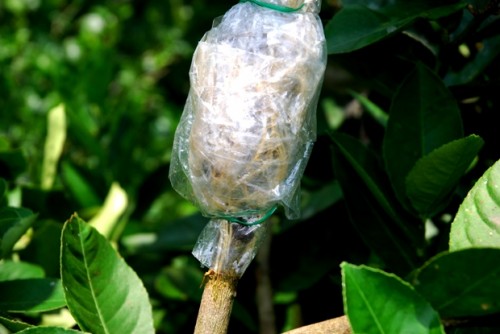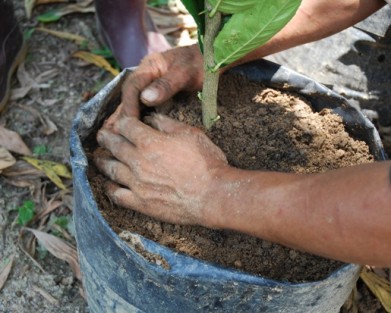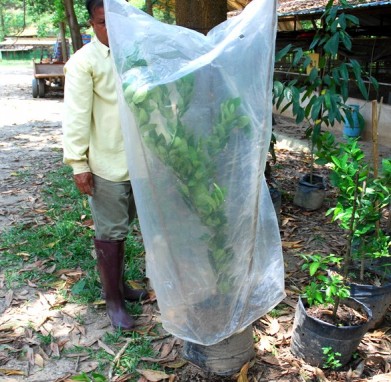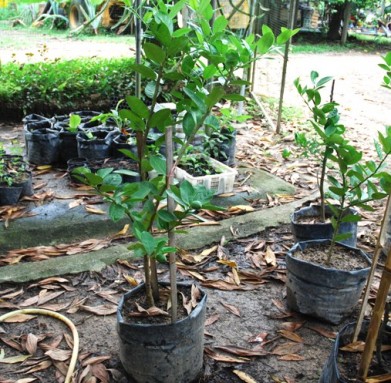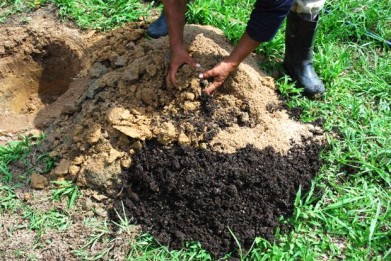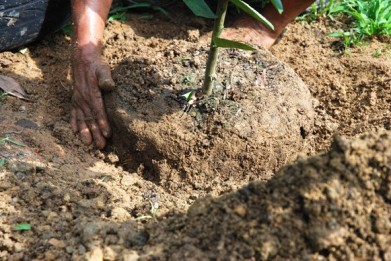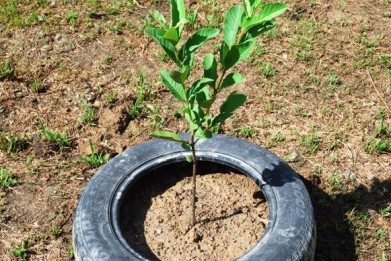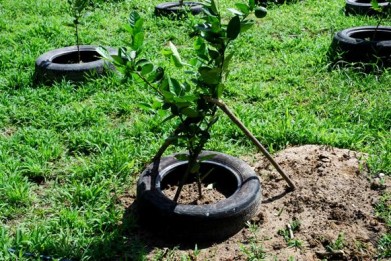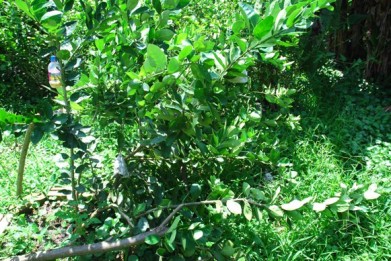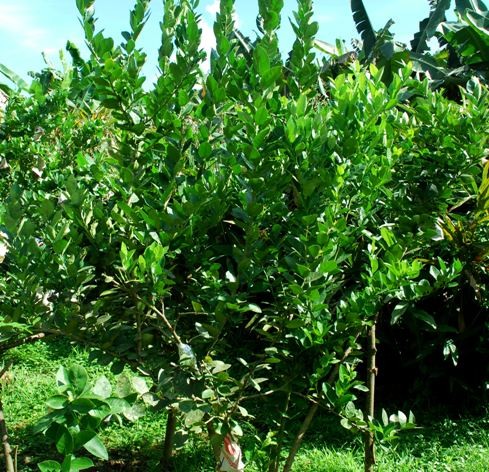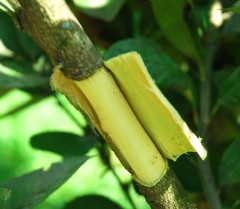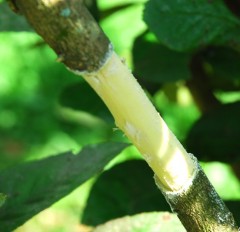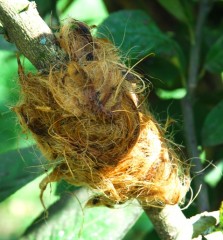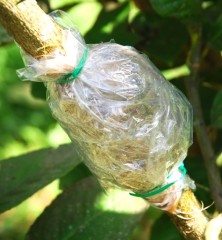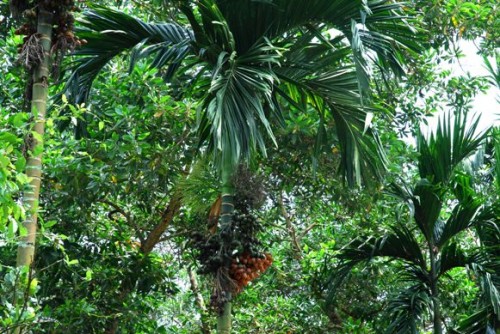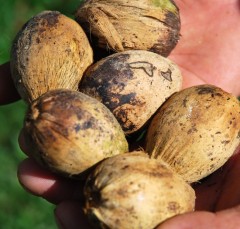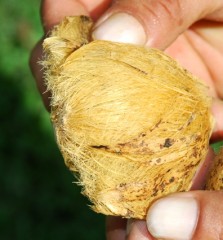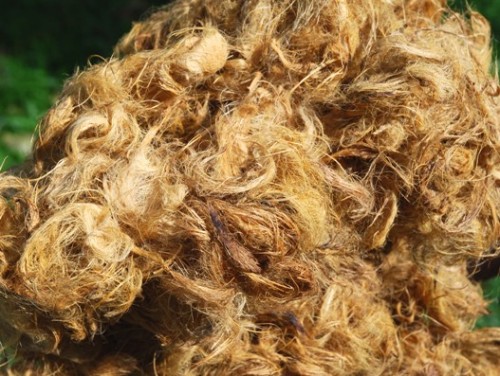Apr 08, 2011
Marcotting II
We generally have good root formation in around 30 to 45 days for lemon trees and other limau-type trees.
Saw off, and dap some iodine on the cut
Wrap vermicast around the root ball
Plant in a polybag with a light, friable and loose soil mix. We like to add some sand and vermicast to our farm soil. Loose, light soil will encourage the roots to grow deeper.
Cover the plant with a plastic bag to prevent drying out. Remove when new leaves and branch shoots are noticeable. Once the new leaves and shoots are established, plant to soil.
The area where we are planting these citruses have heavy laterite soil. We generally dig a hole and then mix the laterite with sand and compost.
We mix the laterite with sand and vermicast or compost
Place the plant half inside the hole
A planted marcotted guava
We generally place an used tire over the spot and top up the soil mix as need be. The tire reduces weeds, and prevent leachate of compost and vermicast.
Support the young tree. Marcotted trees tend to be shallow rooted and care must be taken during windy monsoon seasons.
5 year old marcotted lemon tree falling over after a night of heavy rain and strong winds. Marcotted trees have no tap root so should be supported even when matured in windy zones.
12:37 Posted in Blog | Permalink | Comments (0) | Tags: marcotting, air layering, lemon, organic farming, permaculture
Mar 21, 2011
Marcotting I
Marcotting or air layering is used in our farm to propagate fruit trees such as limau nipis, limau purut and lemon. We also use it to increase the numbers of any endangered tree we come across.
Matured lemon tree from marcotting
We have high success rates with the following method:
Have a clean cut on the chosen branch from the side of the tree facing the morning sun
Dusting with rooting powder helps speed up the process
Wrap with areca nut fiber that has been pre-soaked for an hour or so with boiled water
Wrap well with cling wrap
Finally wrap with aluminum foil
Keep the areca nut fiber continuously moist by injecting in boiled water once a week. Use a syringe. Inspect for root formation progress once a month.
Making areca nut fiber is easy.
Areca Palm ( areca catechu ) at the farm
Ripe areca nuts
Dry areca nuts
Peel open to expose the fiber
Fine areca nut fiber
Sterilise the fiber by soaking in a light iodine solution for an hour and then sun drying. The fiber will keep for months. The fiber can also be used to make ropes, be woven, etc. Remember to soak thoroughly when using for marcotting.
Next, how to poly bag it, and how to plant it in Marcotting II.
19:07 Posted in Blog | Permalink | Comments (0) | Tags: marcotting, air layering, areca nut, pokok pinang, areca palm, areca nut fiber








